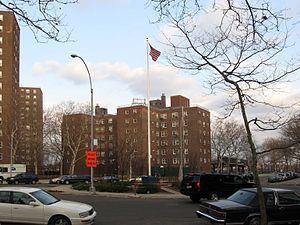Maintained by NYCDOT Postal code 10002, 10009 Commissioned March 1811 | Length 0.9 mi (1.4 km) Other name Columbia Street | |
 | ||
East Franklin D. Roosevelt East River Drive | ||
Avenue D is the easternmost named avenue in the East Village neighborhood of Manhattan, New York City, east of Avenue C and west of the FDR Drive. It runs between East 12th and Houston Streets, and continues south of Houston Street as Columbia Street until Delancey Street and Abraham Kazan Street until its end at Grand Street. Avenues A, B, C and D are the genesis of the name for Alphabet City section of the East Village neighborhood, which they run through.
Contents
Map of Avenue D, New York, NY 10009, USA
History
The street was created by the Commissioners' Plan of 1811 as one of 16 north-south streets specified as 100 feet (30 m) in width, including 12 numbered avenues and four designated by letter located east of First Avenue.
Transportation
Avenue D is served by the M14D bus from East 10th Street to Houston Street (southbound) and Delancey Street (northbound) via Columbia Street.
Structures
Among the structures along this avenue are:
Among many notables who were born or raised on Manhattan's Lower East Side, it is purported that James Cagney was born on Avenue D.
